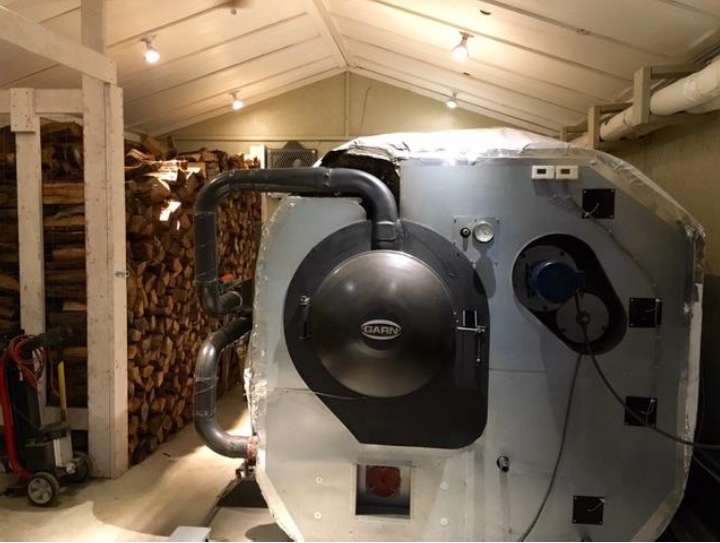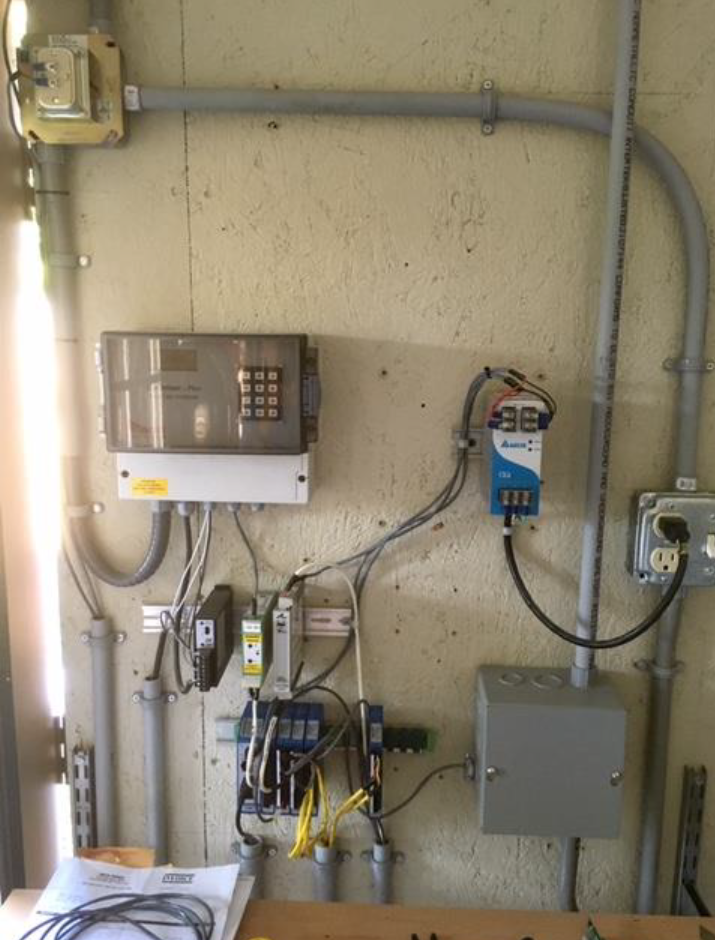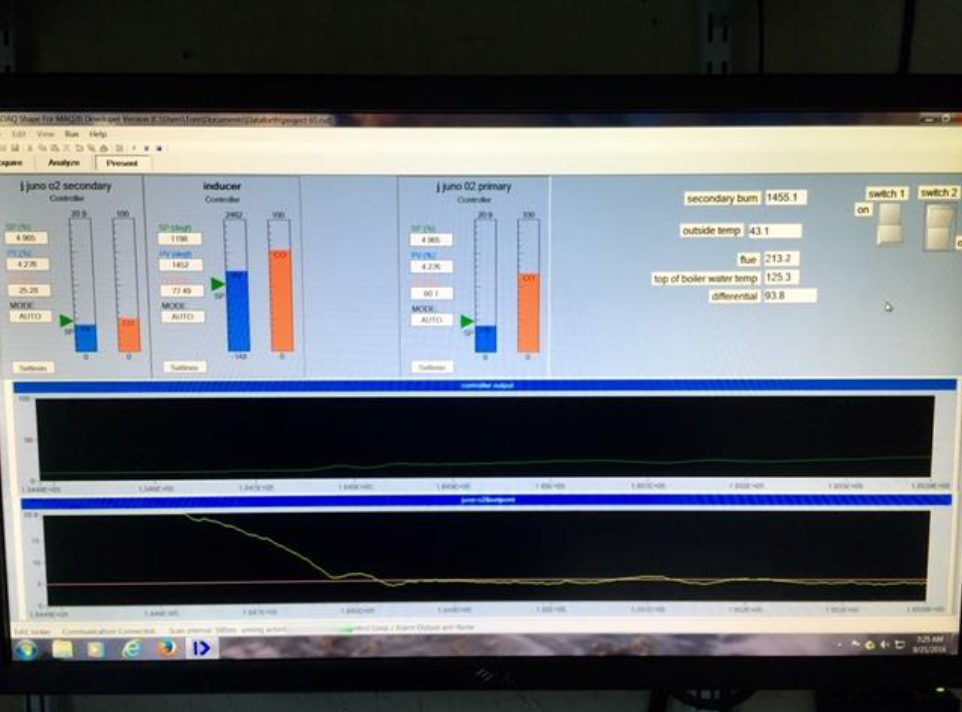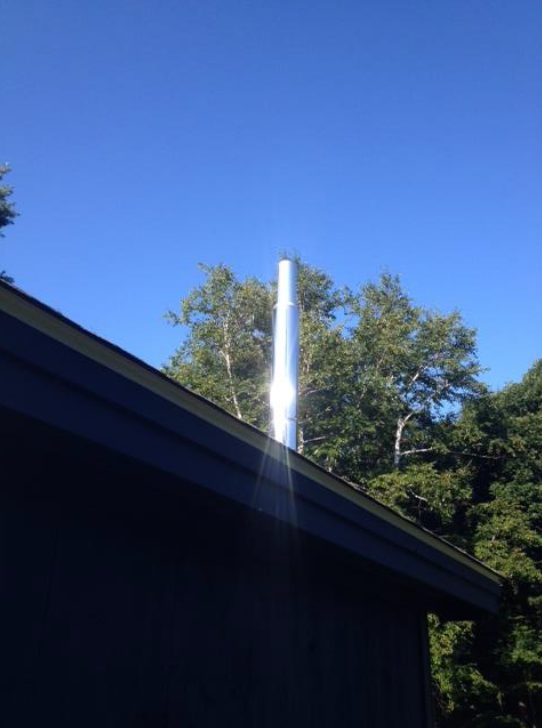MAQ20 PID Control in a Home Heating Application
Application Note
Overview
In this application, a MAQ20 Data Acquisition and Control System along with DSCA Signal Conditioning Modules, standard sensors, and actuators control the combustion process of a batch fed cordwood boiler to optimum efficiency throughout a burn cycle by means of a draft inducer blower and modulation of primary and secondary air dampers. Main Process Variables (PV) are flue stream oxygen (O2) and combustion temperature. PID algorithms are used to modulate the final control elements to maintain an O2 setpoint.Even with equal weighted wood loads taken from the same stack, burn dynamics differ significantly. Smaller splits of wood have more combustible surface area while larger splits result in a less aggressive fire. Different wood species and moisture content affect the burn as well as the stage of burn that the batch is in – beginning, middle, and end all have different characteristics.
Allowing a typical fired home heat system to fluctuate between high and low output as wood is added is inefficient and results in incomplete burn and higher ash and particulate output.
The Method of Control

The boiler is draft induced with a blower, thus air is pulled through two combustion air dampers. The primary air damper controls the flow to the base of the batch of wood, manipulating the amount of wood gas produced. The secondary air damper supplies pre-heated fresh air to the insulated secondary burn chamber where it meets the wood gas. This mixture re-ignites on average to 1800°F, consuming most volatiles. This superheated, clean flue gas with a residual O2 of 5 percent travels through flue tubes, radiating heat into 2000 gallons of water. The exiting flue temperature is approximately 270ºF. Manipulating the draft inducer speed based on combustion temperatures helps to maintain a steady boiler firing rate between 350-400k BTU/hr and minimize excess air flow towards the end of a burn.
Dataforth Products Are Essential Parts of the Control System

The flue gas analyzer 4-20mA output is not linear in the range of 0 to 20.9% O2, and the output signal will not drive the next stage to full scale. A DSCA32 signal conditioner corrects both of these problems and also provides the benefits of isolating and filtering the signal.
When the system was being developed, equipment from several manufacturers was evaluated. The MAQ20 data acquisition with its’ built in PID controllers and wide selection of full function I/O modules fulfilled all of the application requirements and provided the best fit for the developer as well. First off, the developer found the hardware, system configuration process, and ReDAQ® Shape software all intuitive and easy to install and operate. Next, the hardware and software allow simultaneous operation of multiple PID controllers, some sharing the same input. Multiple trend charts can be displayed on the same view page, allowing the user to make controller changes and watch the resultant trends on one screen. While this may seem like a simple and essential feature, industry standard multi-loop controllers do not offer this. The PID controller setting options accessed through the controller faceplate are extensive and readily at hand, including the adjustable Auto Tune. These settings can all be made on-the-fly. The Auto Tune algorithms correctly stimulate the system, read the response, and provide the required coefficients for optimum process tune.

The alarm functions in the MAQ20-KTC module and the Special Functions of One-Shot Output and Trigger-to-Start in the MAQ20-DIOL Discrete Input / Output module enable the draft inducer to turn on at start of a burn and turn off on a differential temperature measured between two thermocouples.
The system currently uses three PID controllers - one for the primary air damper, one for the secondary air damper, and one for the draft inducer. Temperatures are monitored with four thermocouples, two of which are used for control.

Success Story
This system heats a home in the Northeast part of the United States where winter temperatures are very low and sustained. A full wood load is placed in the burner, the system turned on, then the user goes away to work. Throughout the day, a consistent and optimum burn runs and then the system automatically turns off when the set parameters indicating the end of the process have been reached. In comparison to neighboring homes, this home will consume half the amount of wood during a winter season while producing minimal ash and particulate output. The following image was taken during full burn at 500k BTU output and shows no smoke, just a heat plume.
The MAQ20 through its expandable system configuration and wide range of I/O modules allows the developer to control and monitor all aspects of the process and allow flexibility for future system expansion and capability. The developer is not limited if they want to experiment with the control structure or add more PID controllers. The customer notes, "Considering past experience with the system combined with personal customer service and technical support from Dataforth, I'm confident my needs will be met."

Related Content
Dataforth's Library of Press Releases
Was this content helpful?
Thank you for your feedback!






